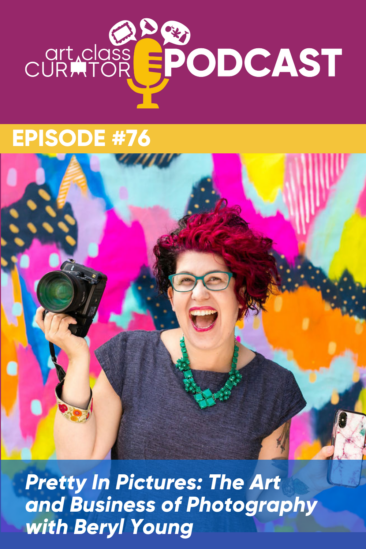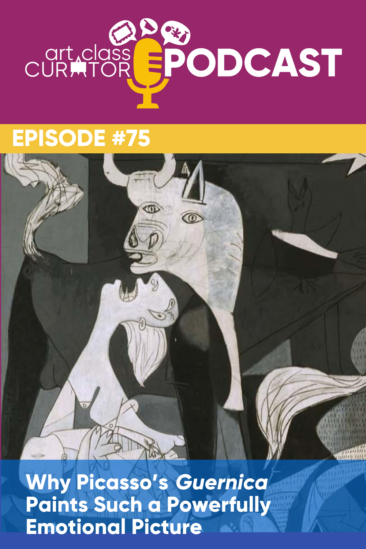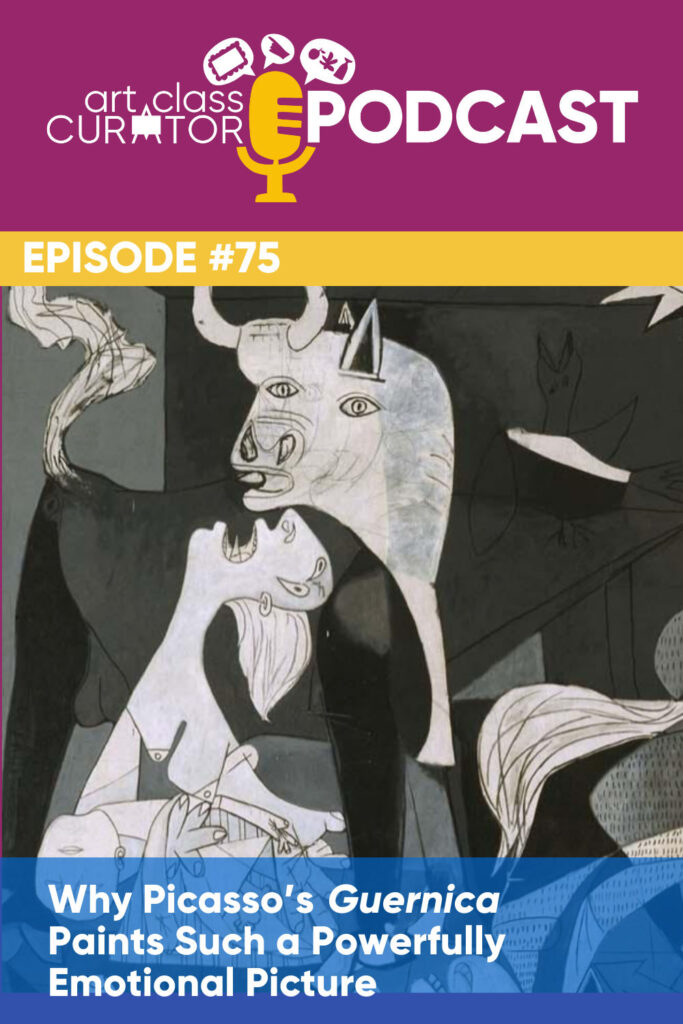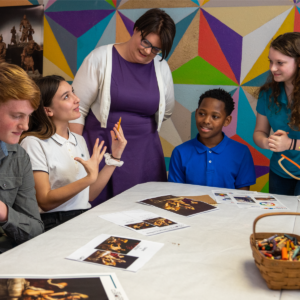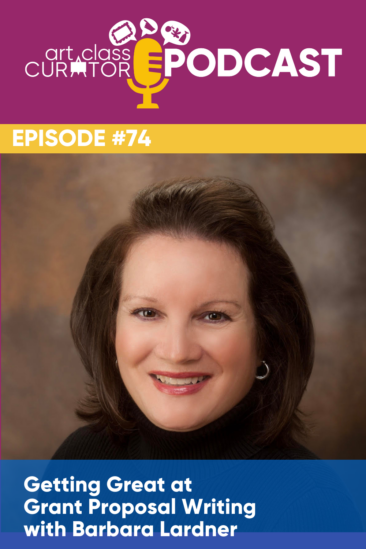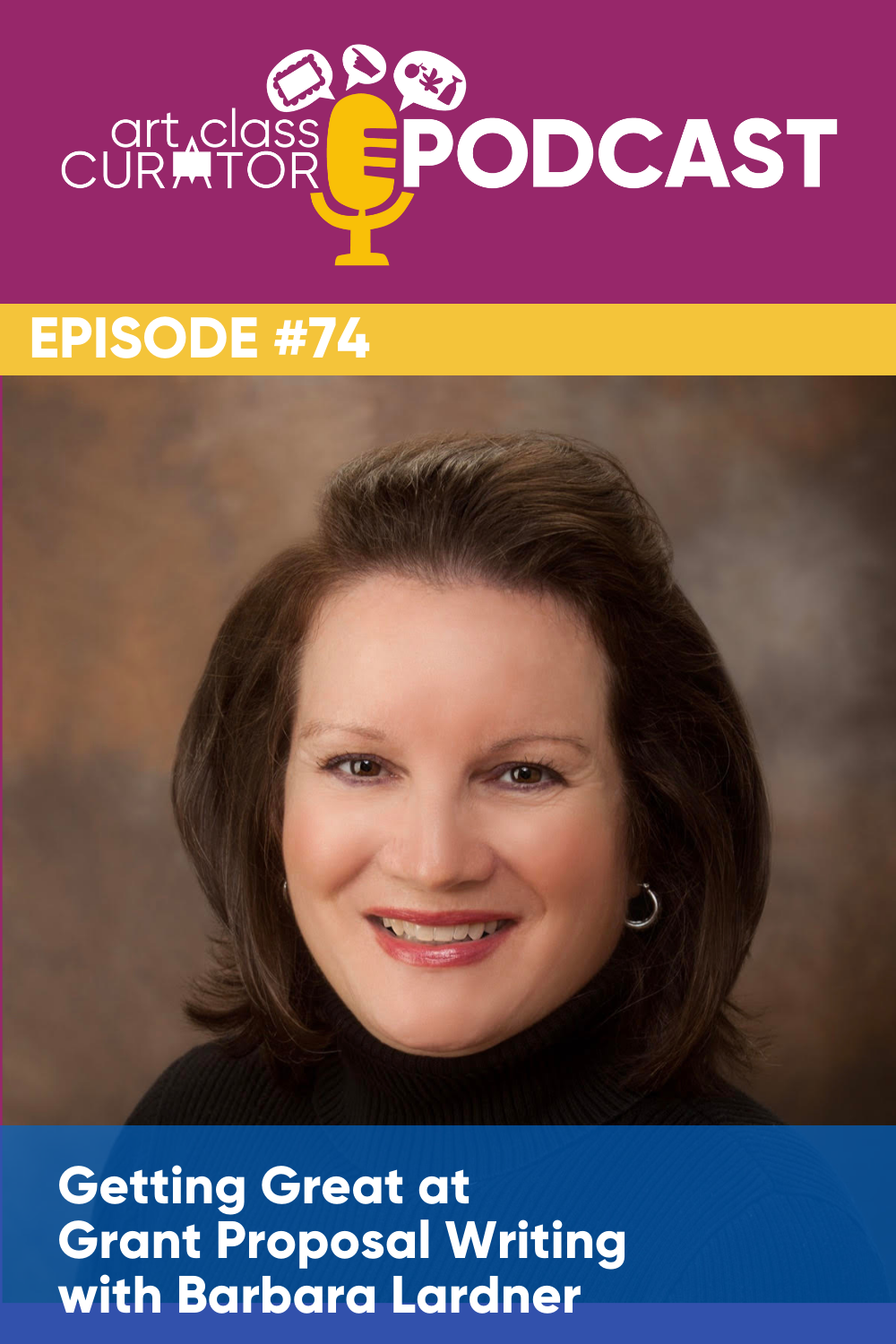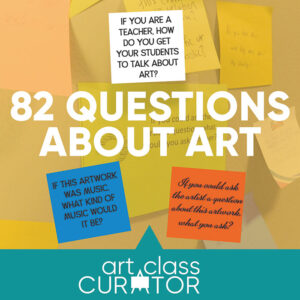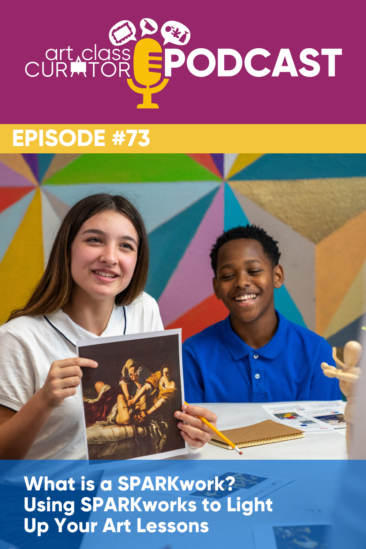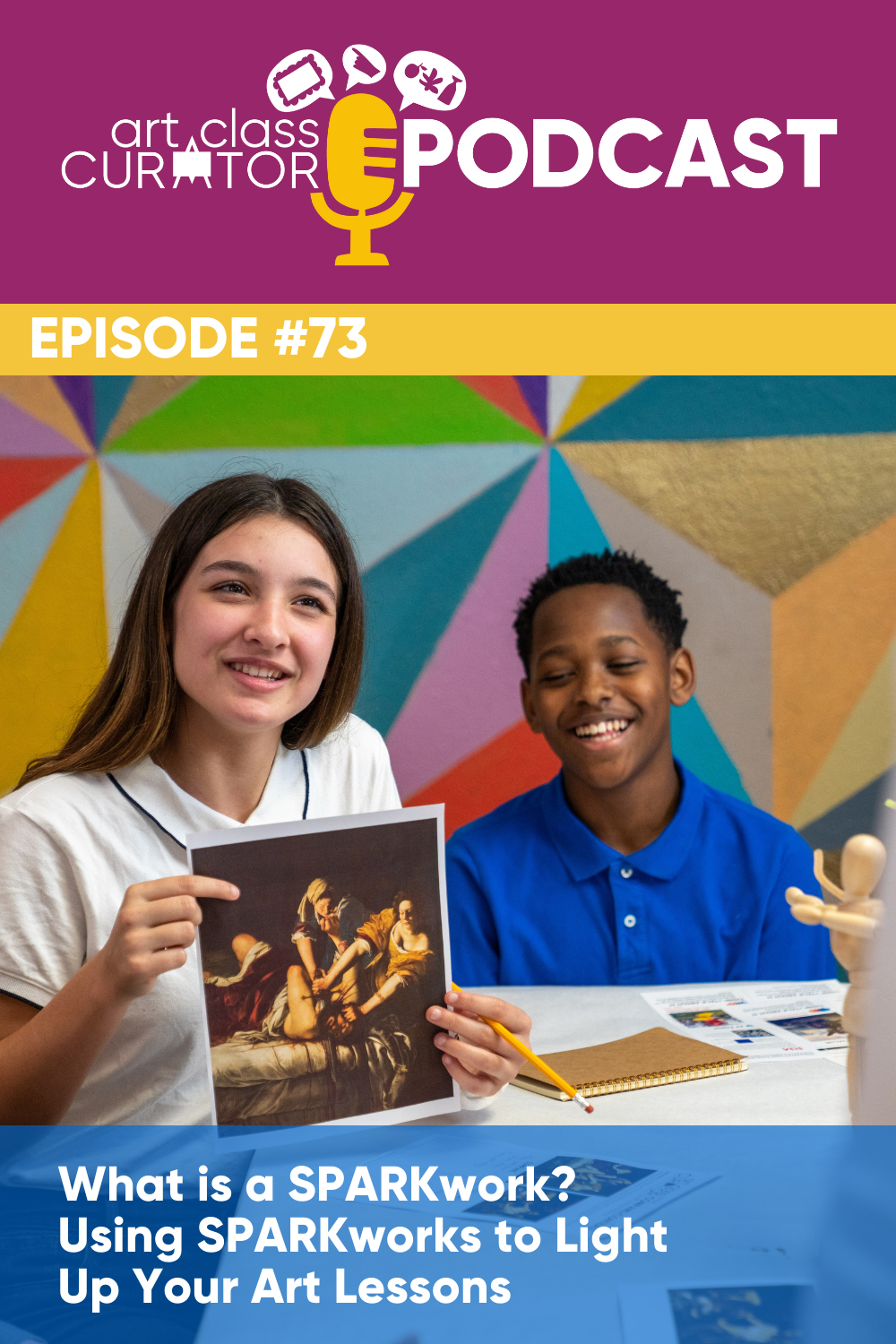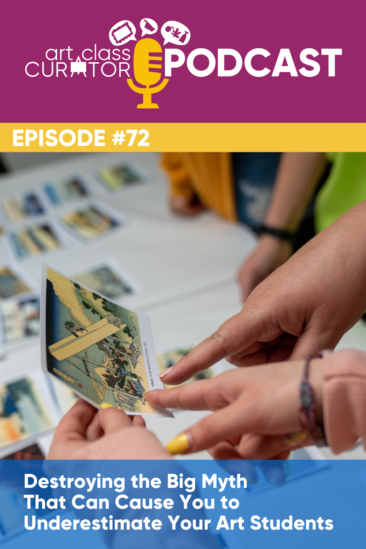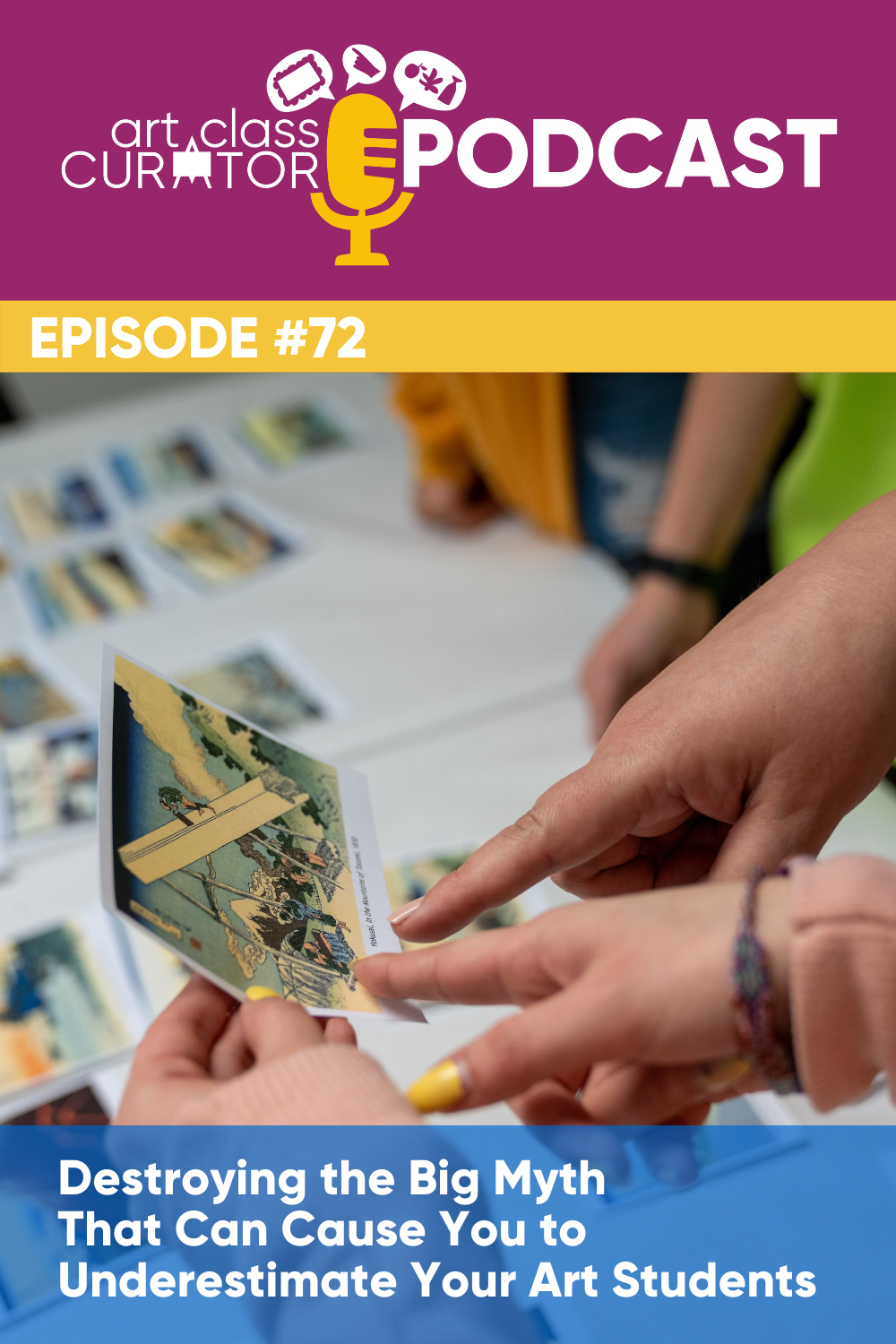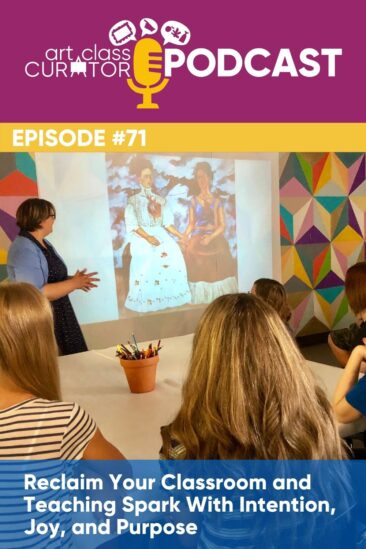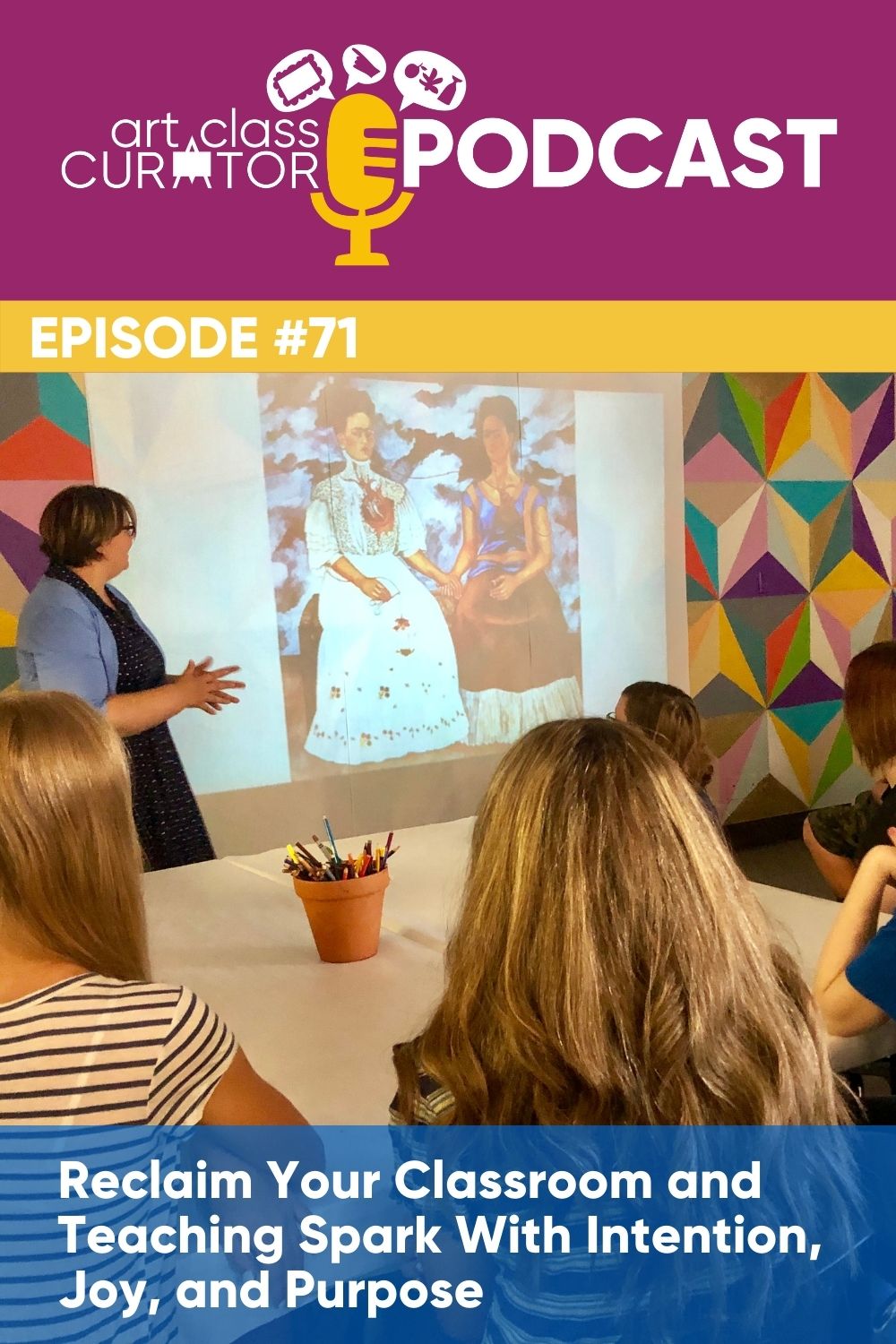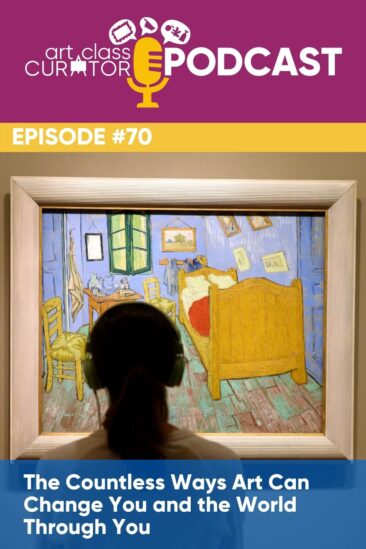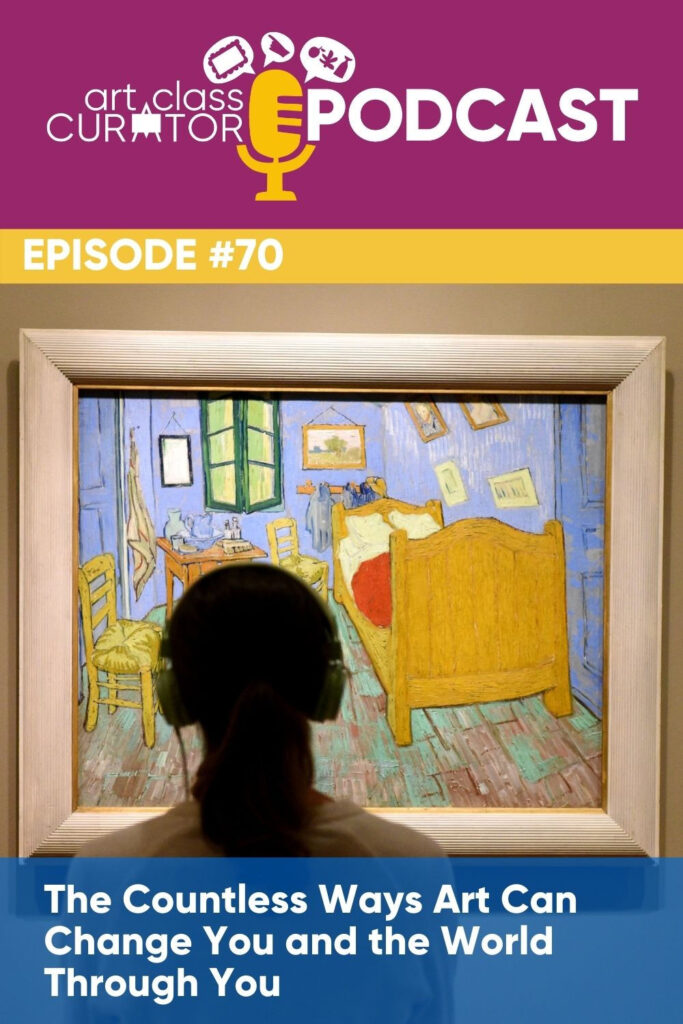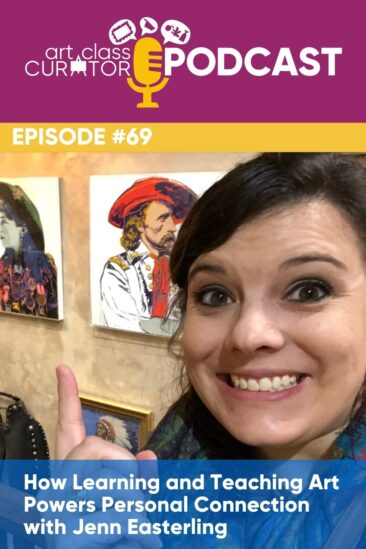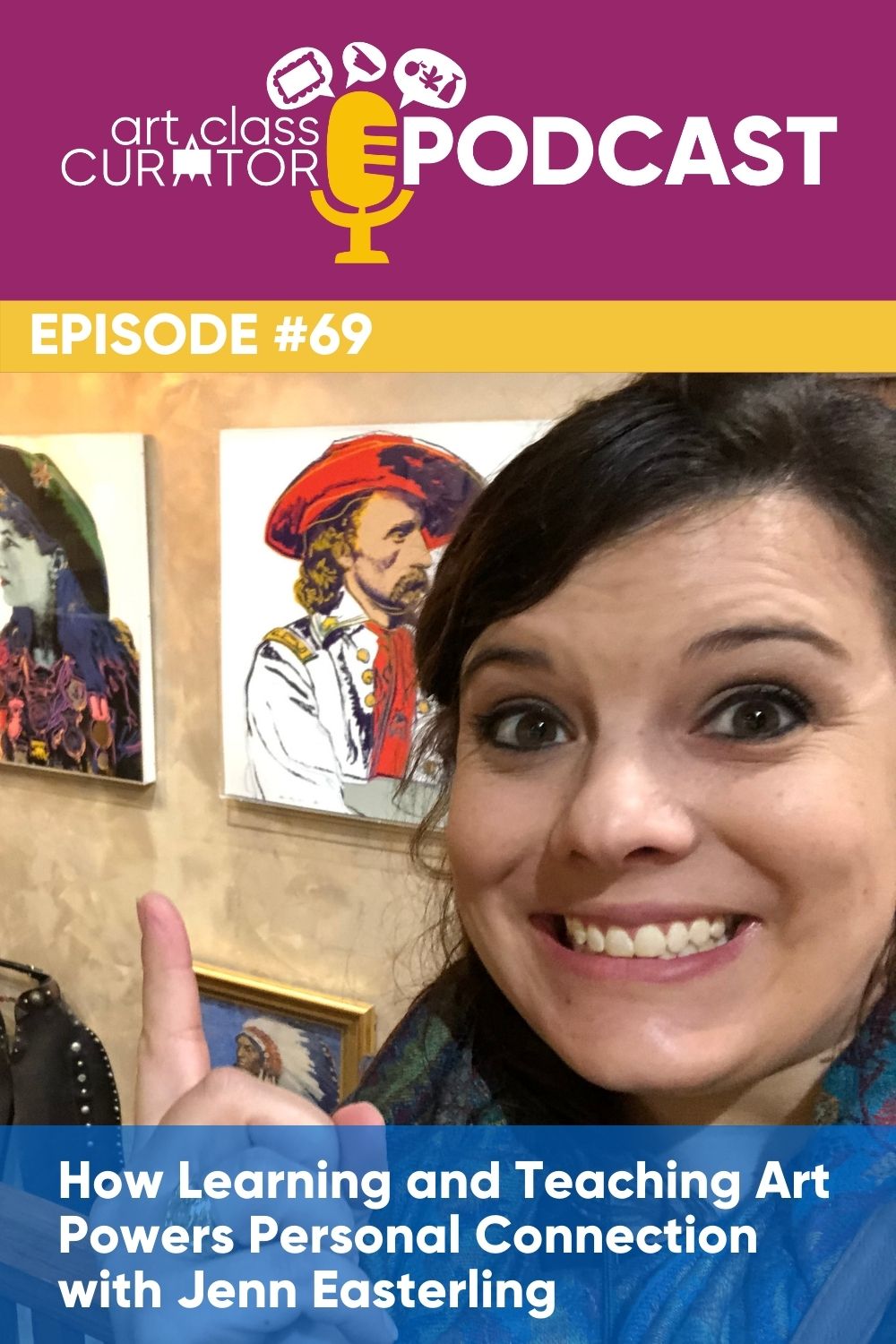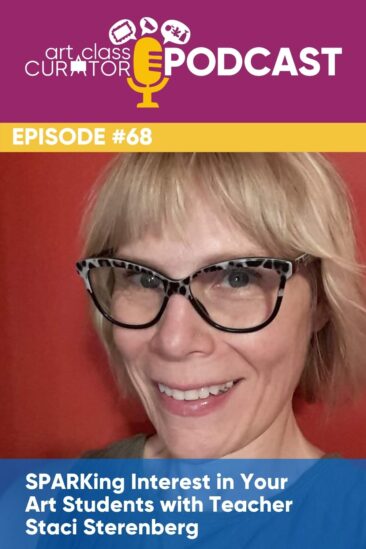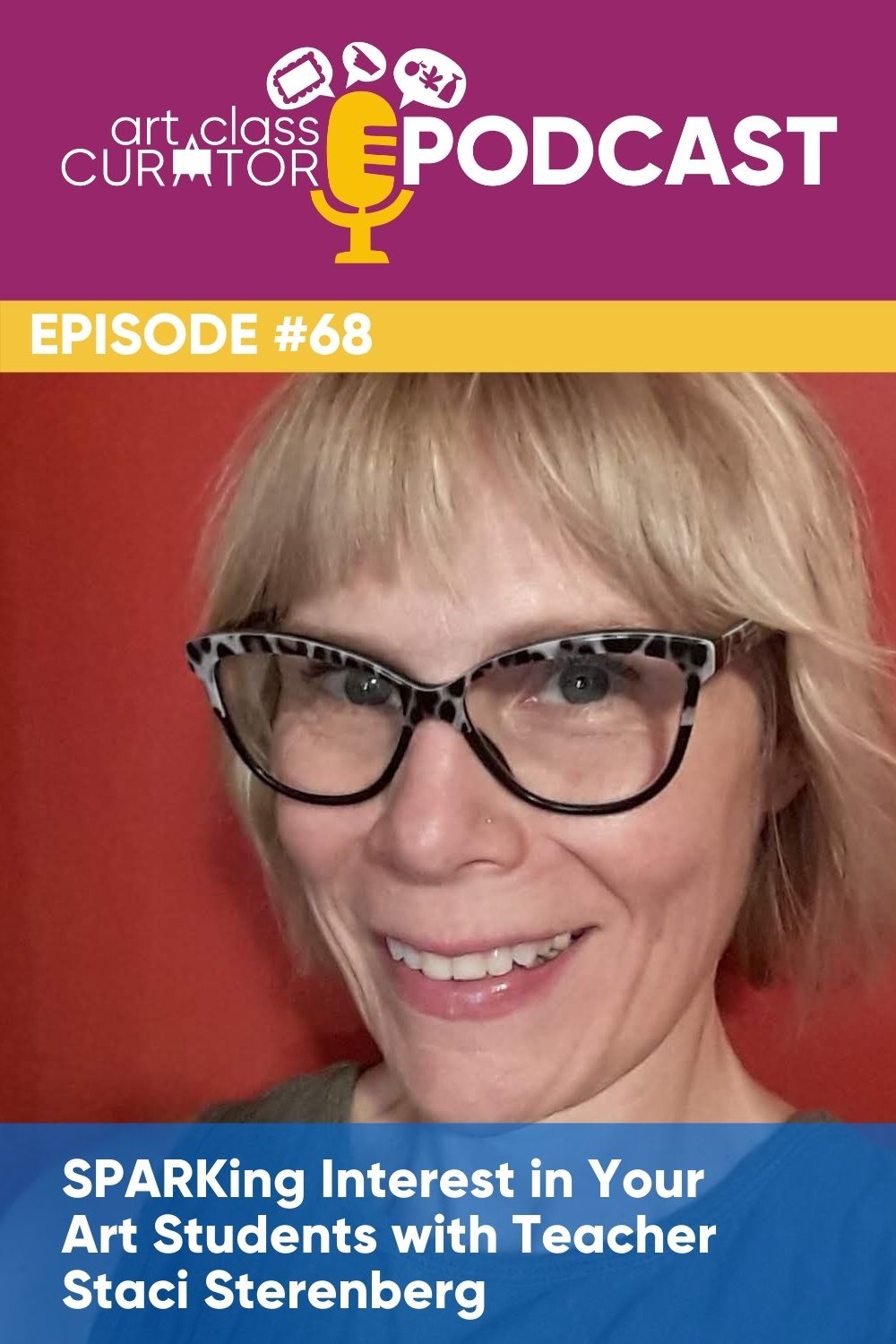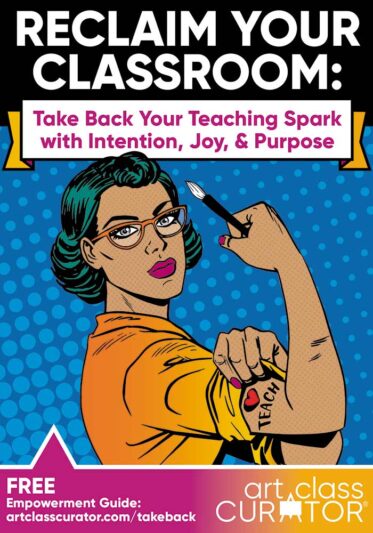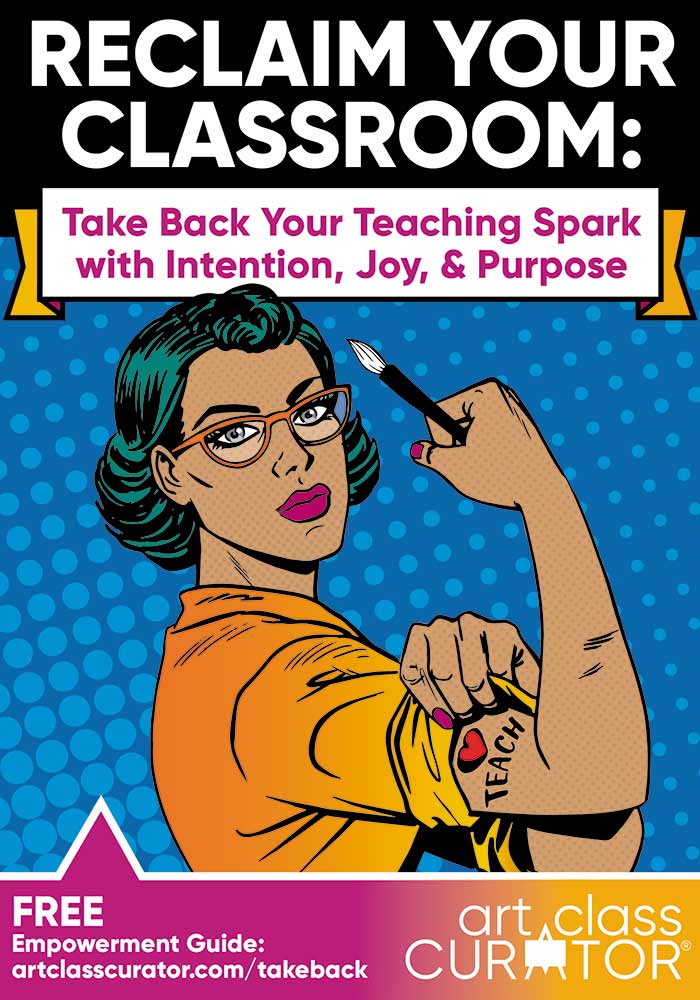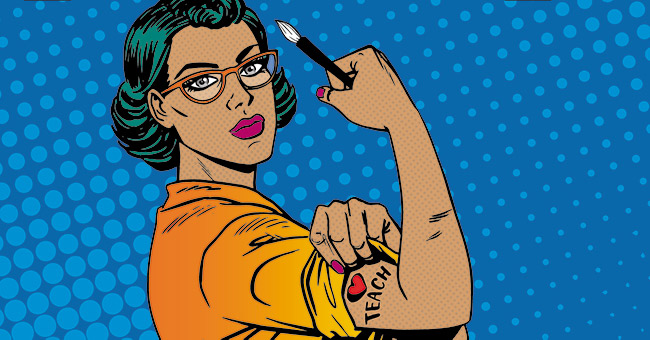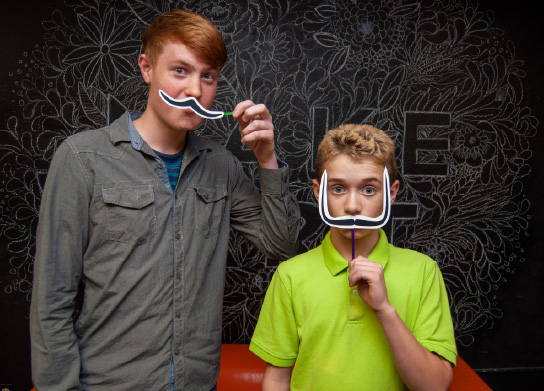Imagine that you’ve never experienced a whole lot of grief before. Then something devastating happens to you and leads to something beautiful. It happened to my guest today, Beryl Young. I’ve known her for several years, ever since I first started Art Class Curator at a blogger conference. Before working with teachers and schools on photography curriculum, she taught kindergarteners and 1st graders for 10 years. Listen as she shares the powerful story of how she started her photography business and how it’s evolved.
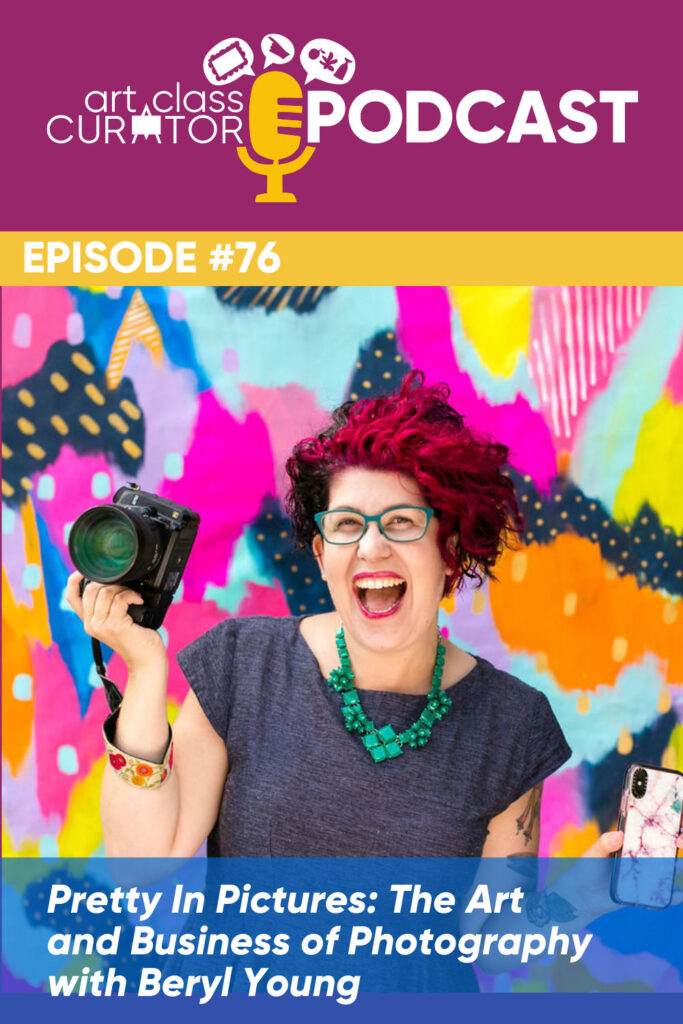
2:54 – The painful incident that triggered Beryl’s transition from photography hobbyist to entrepreneur
9:29 – How Beryl taught herself photography and what inspired her to create her first class
13:21 – How the pandemic served as a huge catalyst for Beryl to shift her business
21:04 – An overview of Beryl’s approach to the teentography curriculum
26:16 – Why Beryl focuses on making photography as accessible as possible
31:37 – Beryl discusses her teentography and kidtography kits
36:01 – The platform that changed Beryl’s life
Beryl Young is the Founder & CEO of Be Young Creative and creator of the Momtography, Teentography, and Kidtography programs. She was never that person who carried a camera wherever she went. But she fell in love with photography in 2009 as a way to document the exciting time of becoming a mom. After an unexpected loss in 2011 she used a camera to heal from the difficult emotions that followed – leading her down the path of becoming an “accidental business owner”.
As a former elementary school teacher, Beryl’s true calling is education. Through a range of curriculum and programs for ANY type of skill level or camera, Momtography and Teentography is on a mission to show families how to unlock their creative potential and capture a bit of joy in each and every day.
Be a Podcast Guest: Submit a Voice Memo of Your Art Story (Scroll to the bottom of the page to submit your story.)
Cindy Ingram: Hello and welcome to The Art Class Curator Podcast. I am Cindy Ingram, your host and the founder of Art Class Curator, and The Curated Connections Library. We’re here to talk about teaching art with purpose and inspiration from the daily delights of creativity to the messy mishaps that come with being a teacher. Whether you’re driving home from school or cleaning up your classroom for the 15th time today, take a second, take a deep breath, relax those shoulders, and let’s get started.
Hello and welcome to The Art Class Curator Podcast. This is Cindy Ingram. Today, I have a friend of mine joining me for an interview. Her name is Beryl Young. I met her years ago when I just first started Art Class Curator at a conference for bloggers. It has been so fun to be a spectator in her journey with her business and to see where it has gone and where it has come from. Today on the podcast, she shares her story about how she started her business, and spoiler alert, it is because of art that she started her business. Now she is working with teachers in schools on photography curriculum. I’m happy to share her journey with you, and without further ado, I would love to introduce you to Beryl Young.
I am so pleased to welcome Beryl Young to the podcast. Welcome, Beryl.
Beryl Young: Thank you for having me.
Cindy Ingram: I have known you for several years and you have a really powerful story about how you started your business and how it’s evolved throughout the start of your business. Can you tell the listeners a little bit more about you, your background, and your experiences, and then what inspired you to start your business?
Beryl Young: Sure. My background is in education. I was a teacher for 10 years before starting my business. As I was doing the math, I was like, “Oh gosh, that was 20 years ago?” I taught kindergarten when I started and I was like, “Oh, yeah, my kindergartners are now graduating from college, so that makes sense.” I taught kindergarten and first grade and then I realized I actually enjoyed working with adults and with teachers more so I transitioned into being a technology resource teacher, which is now instructional technology facilitator depending on where you are. I did that for seven years and it was my job to help teachers become comfortable and confident in technology, which paved the way for where my business journey led me because I now have a photography education business now called Be Young Creative, and we have our Momtography program, our Teentography program, and our Kidtography program. But the business primarily came out of my own motherhood journey.
I was always creative growing up but I wouldn’t consider myself an artist. My mom was an artist but I was not an artist. I just liked creative stuff. I was not super interested in photography but I loved my wedding photographers and I loved our pictures. I took lots of pictures on my honeymoon so it’s definitely an interest. On a teacher’s salary, starting to think about becoming a parent and researching newborn photographers, I was like, “Oh, I’m not going to be able to afford the pictures that I really like.” This was in the heyday when DSLR cameras were all the rage, like 2009, 2010. Everyone was buying one and I’m like, “Well, I’ll just teach myself how to take pictures on my own.”
I got a fancy camera. I actually got it during my first pregnancy as an early baby gift. My pictures were horrible and I realized it wasn’t as easy to take pictures as I thought it was going to be. This took a turn from photography just being this interest and this hobby to being something that fueled this new passion because I lost that first pregnancy. I was 20 weeks pregnant and it was devastating to say the least. This was in September of 2009. This camera that I was gifted to take beautiful pictures of my first daughter, I really turned to, to heal. I hadn’t really experienced a whole lot of grief up until this point. I still have my grandparents, we hadn’t really lost any pets, and I was on the couch, I didn’t want to move, I didn’t want to get up, and people were sending us flowers and meals. I took a photo of these beautiful roses that somebody sent us and I found that I felt a little bit better when I did that. Then I was like, “Huh, I wonder if taking pictures may be a tool to help with the grief.”
So I started looking up photography projects and I was struck by this project that somebody listed on a blog called Take 100 Steps. I was like, “All right, I haven’t been outside in like five days. Let me see if I can get off the couch and take 100 steps.” I did that. Basically, the premise of the project, it’s just like it sounds, you choose a starting point, I chose my front door, you take 100 steps, you stop, and you have to frame some photo where you end up. It became this interesting challenge of “What interesting photos can I take of the dumpster down the street?” You started to make beauty from this unexpected stuff. That project that I did 10 years ago has become the flagship for Be Young Creative.
What was surprising to me was Mom started to tell me, “Oh, wow, I feel better when I do this.” It was a project that the moms wanted to do with their families. Anyways, I know we’re going to talk more about the business but that project really started to get me curious about maybe I should start a blog or maybe I should start taking pictures of people. I’ve dabbled in a lot of different things from starting a portrait photography business to then going, “Nope, that’s not what I meant to do,” to really focusing on education and how I can teach others to be inspired by the camera.
Cindy Ingram: That is such a beautiful story. It always amazes me when I hear people’s stories of how they started their business or how they made that one change that completely shifted their life into a different direction. It usually comes from a blogger or some meme you saw on the internet, some podcast episode and it was like that’s the thing that you needed to hear at that moment to send you in the direction you’re supposed to go.
Beryl Young: Yeah. It almost feels like it was this divinely led thing because I never expected to leave education, I really enjoyed my job as a technology facilitator, but about three years after starting down that photography journey, I was like, “I will not forgive myself if I don’t try to make this a full-time thing for a little while.” It’s been so fun to see the twists and turns and where that creative journey has led.
Cindy Ingram: Yes. Because when I first met you, we were at a conference together and you were taking photos of the participants at the conference. That must have been during your portrait photographer phase?
Beryl Young: Sort of, yeah. I agree to take portraits here and there. When it’s a project that inspires me or makes me feel good, I was like, “No, I’m not going to do weddings or newborns or families,” but sometimes, I will show up and take pictures of other people.
Cindy Ingram: I love it. Another thing I want to mention about your story was how powerful it was that art is what helped get you out of such a tough time in your life. We talk about that a lot here on the podcast in Art Class Curator is how we can use art as a way to better know ourselves, better get through life. I just think that’s a really beautiful story so thank you so much for sharing that.
Beryl Young: Not a problem. It’s funny because, like I said, I never considered myself an artist. Seeing a blank canvas is really daunting for me. My mom is a painter, my mom is a mixed media artist, and I’m always like, “How do you do that, Mom? I can’t do that.” But with photography, I’m like, “Well, the canvas is right there, I just have to make something out of it.” I think it’s why I gravitated to photography because it felt like an easier medium for me to create out of.
Cindy Ingram: How did you teach yourself to be a good photographer? Or is that even a goal?
Beryl Young: Yeah, because I was self-taught for a while. I was like, “Oh, I’m just going to follow blogs,” and there really wasn’t a whole lot on YouTube back when I was learning either. There probably was something but I was like on the photo website Flickr and in communities and I took one little local class near me about my DSLR camera but they didn’t actually tell you what any of the terminology meant, it was just like, “This is how you find the buttons on your camera.” The first class that I built was actually based out of all of this frustration I had in trying to teach myself about the camera because I found it very frustrating that professional photographers would say, “Well, you need to learn manual mode. You need to be able to shoot in manual mode,” and I’m like, “I don’t know how to do that.” I don’t know how all the aperture and ISO and shutter speed, how all of those things work together and so then I put my teacher hat on and I went, “Okay, how do I think through this process?”
Once I did learn it and I learned how to hone in the light and use what was in front of me—that was a two to three year process of even just feeling confident and comfortable there—then I went, “Okay, how can I bring this down to a super, super, super beginner level?” Because it definitely was not easy. But I pride myself on the fact that I’m like, “I think I take a very different approach to how we teach these things than a lot of the other education that’s out there in photography.”
Cindy Ingram: I love that because I tried to teach myself photography one time, it did not go well. It must have been in the 2009, 2010 boom because that’s probably about when my husband showed up home with a DSLR camera. I was like, “I don’t know how to work that.” He kept trying to teach me and I was like, “I just can’t do it. I don’t want to. I can’t.” Then I would try and I got so frustrated.
Beryl Young: A lot of it is practice. The more we practice, the better we get but it’s also easier to practice when you have a framework and a system that is simple to grasp onto and use. So many of the moms that I initially started teaching went on, kept learning, and built their own photography businesses. They got passionate about photography and they were confident when they put that work in. It was fun to see all of these moms get inspired about what was possible for their life when I was like, “Oh, I have this hobby that I can do with my kids and it serves my family and I’m making memories and I learn something new.” Those beginning years of the business were a lot of fun to see this thing, this curriculum that we had created actually come to life and help other people.
Cindy Ingram: Your main target of a person you were helping at that time were moms who wanted to learn photography?
Beryl Young: Yes.
Cindy Ingram: Okay. That was when it was Momtography…
Beryl Young: That’s when it was Momtography and I taught local classes when I started. I’m in Northern Virginia and so all the classes started there. Then I was like, “Okay, I’m going to tackle teaching this in a virtual capacity.” It went from camera education to now I’m going to teach moms how to edit their pictures and now we’re going to tackle the digital overwhelm in printing our photos. Once a teacher, forever a teacher. I feel like curriculum is where my heart is and I just kept creating different tools and curriculum resources along that line.
Cindy Ingram: Tell us about how you started to shift your business. I know the pandemic was a huge catalyst for what you’re doing now, can you talk us through that?
Beryl Young: Yeah. The pandemic was definitely interesting on a variety of levels. We had dove in pre-COVID. We were still very much serving moms and taking all of this curriculum that we created and building out a club for moms virtually and keeping that in-person interaction. When my daughter’s school shut down—I’m a mom of one so what I didn’t mention was after we lost our first pregnancy, we went on to have a daughter about a year later, she’s 10 now—as her school shut down and as all these other schools shut down and as I was talking to our mom audience, I was like, “Moms are just stressed right now,” and it was actually the day before my daughter’s school shut down, I went with one of our Momtography facilitators to a middle school because she was really interested in potentially teaching photography to middle schoolers. We did just like a pop-up photo booth with information and we were going to teach a spring class together locally in our community.
I remember sitting there talking with her and being like, “Huh, what are we going to do if everything shuts down? Hopefully that won’t happen, but what are we going to do if we can’t teach this spring class?” Of course, the very next day, everything shut down and I think in those times of trauma—my grief experience taught me this—I am a dive into a project head first for better or for worse, I’m going to get lost in my art and in my work, and so I was like, “What is going to be my best way to show up and serve?” I knew trying to encourage moms to get involved in something was not the right way to go. Moms were really in this place of “I need to show up and serve my families.” Instead, I was like, “I bet I can take what we were going to do this spring in-person class and turn it into a virtual experience for teens,” which is exactly what we did. When I was a teacher, I led a four or six week after-school club for elementary school students at the school that I taught at. I was like, “Huh, I bet I could take all of those activities that we did and run that.”
So I put out just a little post on Facebook “Would your preteen or teen be interested in joining me for a virtual Teentography class?” We had over 99 kids sign up in that first class. In three weeks, I wrote a curriculum and taught it. It wasn’t fully fleshed out then but it was so much fun. We taught one session and then we taught a second session. Then we did a combined virtual summer camp for moms and teens. We’ve spent the last year going, “Okay, what could a curriculum look like that could be utilized by families, by schools, or by educators?” We’ve been tweaking it all and honing it and putting it together into this Teentography/Kidtography curriculum kit.
Cindy Ingram: I love it. That period of the pandemic was so inspiring to me just to see, as a business owner, I have a lot of business owner friends who I’ve met along the way, it was so fun to see how everybody was responding, what everybody started to talk about, it was like everybody I knew jumped into serve mode. We knew this is the time we need to just love on our people, serve our people, and it was so fun to watch everybody take this in so many different ways and serve their audiences. I love it.
Beryl Young: I agree. I think entrepreneurs and artists, we were made for a time like this because our creative brains got to go, “Okay, this is a total left turn from what life was, how can we create something amazing or new or that allows us to serve out of this experience?”
Cindy Ingram: Yeah. It invigorated a lot of businesses, a lot of businesses obviously struggled, but there were so many businesses that it breathed new life into because they just had the opportunity to be more creative. We just dropped everything we were doing and it’s like we started fresh the day it started. It’s crazy. I also did try really hard to get my daughter to sign up for your Teentography class. She would not agree to it and I was like, “Come on.” She just doesn’t want to do classes. She’s more independent than that.
Beryl Young: If it makes you feel any better, my own daughter does not like photography, does not like virtual learning. She was signed up for the first class by me but I think she only came to one or two classes. Her and I did go out because I tested all of the lessons on her but that was more of like, “We’re going to go out for a walk and we’re going to do this thing that’s helping mom figure out her work,” but she’s not a virtual learner either.
Cindy Ingram: That makes me feel better about my daughter. We did a personality test the other day. I was watching her answer it because it was really fascinating but all the questions about art, she just didn’t answer as confidently as I would have. It wasn’t like she didn’t see the value in art but it wasn’t like the art was the top and I’m like, “Your mom is Art Class Curator,” but anyway, side note.
Beryl Young: I love it. I understand this very well. I’m like, “Wait, you don’t like this thing as much as I do?”
Cindy Ingram: The thing that I’ve dedicated my life to? Come on. What I think is really powerful about your program and about your story is that you are coming at teaching photography, not from a place of, “Hey, I’m an expert photographer and I know all the ins and outs on how to make perfect photograph, and now I’m going to show you all these expert tips,” that doesn’t work in the real world. I love your approach. Can you give us an overview of what your approach is in the Teentography curriculum? What are the goals of your curriculum? What are the things you hope the kids get out of the experience?
Beryl Young: That’s a great question and we actually recently changed our tagline to “Helping families capture life creatively”. I’ve always been in this lane of photography education, but I tell everyone it’s so much more than that. For our moms, it’s been about feeling empowered and feeling creative and feeling capable. It’s that self-discovery piece that I think as moms, we start to lose ourselves in motherhood and we lose sight of what our passions are. They shift and change. Along the same lines, we really built our Teentography curriculum to be this creative exploration that I personally feel like has been lacking in education. It’s a big reason why I took a step away to do my own business, really amazing teachers and there are so many amazing teachers that find the ways to integrate all those things and make them happen. I love that you’re doing Art Class Curator because I think if I had to do it all over again, I’d go back to school and be an art teacher because it’s what we need.
I was talking to a group the other day and really saying that in order for our students to do the things that we need them to accomplish academically, they need to know themselves and they need to feel grounded, safe, and comfortable with who they are. At first, when we built Teentography, initially when the pandemic first started, I was like, “We’re just going to give these kids fun and lightness.” One of our lessons is making a meme and so we have like fill in the blank meme creator and then they go take a photograph to round out that meme and what it needs to be. These really fun lessons are on target with what a kid or a teen is going to want to do, but we also saw the teens and kids learn about themselves and get excited about sharing their stories and about their families.
After that initial run, I really started to ask myself, “Okay, I did this for families but how could this really serve teachers in education too?” Then the light bulb went off and I’m like, “Okay, social emotional learning has been something that education has been focusing on but with the pandemic, it’s even more so going to be important in the coming months, years.”
As I took a different lens, no pun intended, on the curriculum, I was like, “All of this connects back to SEL competencies and what kids need to know. All of our mom curriculum has also connected, moms aren’t as focused on SEL but it’s been that self-discovery introspection, who do you want to be, and I feel like that’s really the power that the camera offers. It feels good when you learn a new trick or technique or become that expert photographer, but I’m more interested in what’s underneath that, like what changed about you to get you to that place where you were able to take amazing photos and enjoy doing it.
Cindy Ingram: Oh, I love that. The SEL is so important. You said that moms aren’t necessarily focused on that but I think SEL is something that everybody needs to definitely consider. I was researching SEL sometime over the last few months for something, I don’t remember what but some website was like “Social emotional learning should start with the teacher. Once the teacher is aware of their own needs or their own social emotional learning, then they can better pass it on to their students.”
Beryl Young: Yeah. I think SEL is the buzzword that we get in the education space but for me, it all connects back to mental health, emotional health which I think is becoming more visible. I think the pandemic has also brought to light how important our mental health is. For our mom audience, that sometimes resonates a little bit more than if I show up and I’m like, “SEL.” It’s semantics in how it’s all coming together but with our education program, that’s really where we’re focused on, how can we make SEL something that is fun and integrative for kids and teens to learn.
Cindy Ingram: I love it. I know a lot of teachers, me included when I was in the classroom, don’t teach photography. We just don’t do it because one, we may not have the technology or that’s probably the number one reason why I didn’t do it, although that’s not really true anymore. I think there’s a lot of teachers, myself included, that think that to teach photography, you have to have a DSLR camera, you have to have a lightroom or some fancy photo editing software, there’s all these things you have to have. But it sounds like your curriculum, you don’t need any of that.
Beryl Young: No. That was really important to me because going back to our mom audience, I knew that the DSLR craze wasn’t going to be around forever and so we had the program for them to help them learn that camera, but then I was like if it’s about the feelings and emotions and as we all started to use cell phones more and more, there’s other fun things and teachings between photo editing, apps, and printing that get at the same stuff. I’ve really been focused for the last five years or so at making photography as accessible as possible. I knew in putting the kid and teen curriculum together that they weren’t necessarily going to have DSLR cameras or they’d be picking up their mom’s or dad’s DSLR camera and they’d have no clue and some of it wouldn’t necessarily be developmentally appropriate or there wouldn’t be that readiness there to teach them all of the tips, tricks, and techniques.
Now, 10 years ago when I was in school, the art teacher that I worked with, we would collaborate sometimes. But that was always the struggle, she was like, “Well, I don’t have a classroom set of cameras, how are we going to do something with this?” It wasn’t until we started to get iPads in the school that we were able to really make some of those lessons come to life, and that may be the benefit of having been a technology integration teacher, it was my job to figure out how we can make this work with a group of students even if we don’t have 10 cameras or 20 cameras for every student in the class. Now I tell the students we work with, “You can pick up a tablet. You can pick up a phone. You can pick up a point and shoot.” We try to give them options in “this is the camera you can use”.
Our curriculum is mainly focused on an app-based device because now there are so many apps out there to have fun with your photos. The really fascinating thing has been watching the kids and teens, they don’t care about the quality of the pictures, they’re less perfectionistic than we are as adults. Some of them will go out and really want to look for the light, and I think the older they get, they start to look for some of those things in a different way but they’re just excited to pick up a camera and go take pictures of anything.
Cindy Ingram: Yeah. That’s the same as a choice-based classroom where you just give the kids the supplies and you let them experiment with them. You let them see where it takes them. That’s the same process. Then we hope that through that process, they’re going to want to get better and learn different techniques. It gives them the photography bug which then will take them further.
Beryl Young: Yeah. I think photography is evolving to be so much more than the picture itself and kids want to really have this creative process where they get to layer in text or edit. We’re in the TikTok generation now. Some of the kids and teens were like, “Oh, are we going to do video?” I don’t necessarily consider a video my forte but they’re more interested in what cool apps can I teach them about or what are they going to get to do with their photos when they’re done taking them. There’s a lot of giving them free, or at least, free trial accessible apps to take the lesson and make it more holistic.
But it is interesting, I have noticed what you said about art classrooms as well, I have found that photography is sometimes this whole separate thing that doesn’t really end up in the art classroom as much. I’ve always wondered why that is or even in my research about making Teentography and Kidtography into this arts integration curriculum, there’s not a whole lot of SEL research that deep dives into photography as a medium. It’s been interesting to explore this past year.
Cindy Ingram: Oh, definitely. Every time I hear about photography being taught from teachers, it’s usually a separate photography class that is taught at a high school or they’re doing photographs of their work to turn in, but I rarely see photographs as the project.
Beryl Young: I think it can be this really unique powerful tool because kids get excited about having like, “Oh, we’re using cameras today? This is exciting,” and it doesn’t matter what you’re having them do with it. Now if you use it too much, then they might not be as excited. But if they haven’t used them at all in the school setting, it can be really engaging.
Cindy Ingram: Definitely. You said you have Teentography and Kidtography kits. Tell us what that is, what is the kit, how do they get it, what is it for, who can get it, all that stuff.
Beryl Young: We started to take our curriculum and go, “Okay, how would a school want to integrate this into what they’re doing?” Our kits are divided into four separate lessons and really, those lessons, we offer suggestions on how they can be used. Our vision as a brand is that it’s either integrated into the school day by an art teacher or by a classroom teacher, depending on the school, or, like my beginnings, we used to offer an after school program. If it’s something that doesn’t fit into the normal school day, we wanted to make these kits something that you didn’t need to be an expert, you need to be photography expert to utilize, you could take it and pass it off to a teacher, to a parent, to whoever to then do these fun activities with the kids.
It’s four separate activities. Some of our schools choose to do them as a week-by-week, if it’s an after school club, it’s okay. Each lesson is going to span a week. But you could technically take what’s in a kit and there’s enough there that depending on how often you’re focusing on it or how often you’re meeting, you could spread it out into a month-long lesson too. There’s a lot of options.
The kits also have cross-curricular suggestions. Here’s an example, one of the kits we introduce, our 100 Steps Project, we offer a photography skill that they’re going to be looking for and in that kit, it’s negative space so we’re giving the tools to talk about negative space with the students. The kits come with digital guides too so there’s a slide deck so the teachers automatically have samples of what negative space looks like that they can show their students. Then there’s a couple of worksheets or planning sheets that the teacher can use to develop the lesson and find those cross-curricular integrations to utilize them.
Cindy Ingram: Wonderful. There are multiple kits and each one has a different topic?
Beryl Young: Right now, we have two. We have enough curriculum to work our way up to probably having four or eight kits available but we’re separating them out. Our Kidtography kit is aimed for grades K through five or six, and then the Teentography kit is the higher level like 6 to 12. That’s where we really get into some of the more in-depth, talk about light and about aperture and bokeh and some of those things. We have two main kits right now.
Cindy Ingram: I love that you’re building in the photography skills, you’re building in the SEL, and also it’s fun for the students too. It’s like a beautiful mix of things.
Beryl Young: Yeah, and we know different schools are going to need to utilize it in different ways. Because we’ve seen that happen, we’ve been able to chat with a couple different schools. It’s still really early and how we’re getting it out into education but we have a couple of trial schools that are working with the curriculum right now. Right now, we’re really just learning how it’s going to be utilized and adding and tweaking and making it better and better.
Cindy Ingram: Wonderful. Where can someone get one of these kits if they want them?
Beryl Young: Our website is teentography.com, pretty simple, and we have all the information on the two kits, what’s in there. I have done a bit of professional development as well so there’s a contact form on there where we’re customizing solutions for each group.
Cindy Ingram: Perfect. Is there anything you feel like you didn’t say before I do wrap up questions?
Beryl Young: No, I think I’m good.
Cindy Ingram: Okay, so we will put your links to Teentography in the show notes as well as any social channels that you want to send people to. Then we always ask one final question on the podcast, which I don’t think I warned you about, but that question is which artwork changed your life?
Beryl Young: Oh, you did not warn me about this. This is a tricky question and I’m not having any famous artist strike me off the top of my head, but I’m going to go back to the beginnings of my photography journey because I became a super invested Flickr user. I don’t know if you’re familiar with Flickr but it’s a photo sharing community. It does still exist but it was very popular in the early 2000s. It was pre-Instagram, it was a photo sharing community. I made so many virtual friends through this space and there were all these groups for sharing your project 365 photo a day pictures.
I don’t have one specific artist that inspired me but I feel like Flickr changed my life because it showed me what was possible, it had me following all these really inspiring photographers, and it encouraged me to step out of my creative comfort zone and emulate what I was seeing and actually practice and do the work to hone in my photography skills. That’s an answer/not answer but that was the first thing that popped into my head was just having those guides who were not professional to teach me what I needed to know.
Cindy Ingram: I love that. It makes me really think about how art now changes so fast. When you think about the past, like Ancient Egypt was 3000 years and the Renaissance was 200 years and now it’s like, “Oh, here’s an art movement, it lasted like two weeks,” then we move on to something else. It’s because we’re all just living in this soup of creativity and everybody is responding to everybody else and getting inspired by everything. I think it’s such an exciting time to be in.
Beryl Young: I think it speaks to my values of wanting art and creativity to be accessible to others that you don’t have to be the expert to create or to inspire someone else.
Cindy Ingram: That’s a lovely final sentiment which kind of gave me a little bit of chills so that’s a good ending.
Beryl Young: Yay!
Cindy Ingram: Thank you so much, Beryl, for joining us today.
Beryl Young: I appreciate you having me. Thank you.
Cindy Ingram: It was a pleasure. We will see you next week on The Art Class Curator Podcast.
Art Class Curator and Nasco have come together to create two incredible full art curriculums, World Mosaic for Elementary and Perspectives for High School. These are so much more than just lesson plans. Your students will experience powerful social emotional learning that’s integrated with language, arts, social studies, history, and more. They are totally aligned with National Art Standards. World Mosaic will take your elementary students on a journey around the globe as each unit features an artwork from a different part of the world with art projects that explore various media and activities that will strengthen their critical thinking skills and expand their worldview. Perspectives is a high school course that explores how art connects us with ourselves and one another through 10 idea-centered themes; using diverse artworks, thought-provoking discussions, and engaging activities. Perspectives also gives teachers the option to create a choice-based classroom so it’s perfect for any type of teaching model. We are thrilled to be partnered with Nasco Education. They’ve been working with districts for years and are huge advocates for educators everywhere. You can learn more about these exciting curricula at artclasscurator.com/nasco.
Thank you so much for listening to The Art Class Curator Podcast. If you like what you hear, please subscribe and give us an honest rating on iTunes to help other teachers find us, and hear these amazing art conversations and art teacher insights. Be sure to tune in next week for more art inspiration and curated conversations.
Subscribe and Review in iTunes
Have you subscribed to the podcast? I don’t want you to miss an episode and we have a lot of good topics and guests coming up! Click here to subscribe on iTunes!
If you are feeling extra kind, I would LOVE it if you left us a review on iTunes too! These reviews help others find the podcast and I truly love reading your feedback. You can click here to review and select “Write a Review” and let me know what you love best about the podcast!

